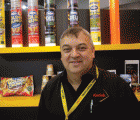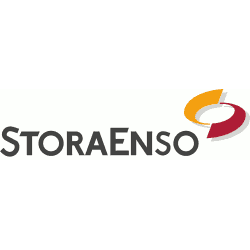
An excerpt from AP September 2020 – by Koenig & Bauer Australia managing director Dave Lewis
Offset printing in Australia, and around the world for that matter, is still very much alive and will be for many years to come. Of course, COVID-19 has presented the world with real challenges, which has badly affected commercial printing – amongst many other industries – but many packaging printers are doing very well. This is because consumer trends during this period have shifted towards e-Commerce and online purchasing, which involves more packaging than in-store purchasing.
Packaging presses is the main market for Koenig & Bauer both locally and around the world, although we sell commercial configurations as well. In fact, our new Rapida 106X is one of the fastest perfecting press in the world with a top speed of 20,000 sheets per hour in perfecting mode.
We also offer automated plate logistic systems and this, coupled with our ErgoTronic AutoRun feature for automated make-readies, allows for profitable short-run work, which is particularly attractive for Web2Print and section printers. ErgoTronic AutoRun is a standard on all our Rapida sheetfed offset presses.
Koenig & Bauer also has a wide range of offset presses ranging from our half size Rapida 76 through to our medium format Rapida 105 and Rapida 106, then our Rapida 145 and Rapida 164 large format presses.
Offset printing is not a dying trend as its quality is still very high and offset presses can come equipped with coating units for single or double coating applications, cold foil, screen printing, die-cutting and corona treatment units. Offset is good for volume printing, and some of what was once seen as challenges within offset is now a benefit.
One of the biggest changes to offset presses in recent years has been the much quicker make-ready times and lower waste levels, putting it on the same level as digital and allowing offset to compete with digital to some degree.
With that said, we still see digital as a complementary technology and not replacing offset at this time. Digital printing has made major inroads in commercial print but when it comes to packaging, the vast majority of folding cartons are still printed by sheetfed offset.
Sheetfed offset presses can also utilise several ink and coating technologies on the same press such as conventional, UV and LED UV inks and coatings. Another major change is that large format presses can now be make-ready in as much as the same time as half-size and medium format presses with very high running speeds as compared to large format presses from, say, 20 years ago.
At Koenig & Bauer, we believe that a hybrid offset and digital technology will drive the future. Leaning towards that trend, we recently unveiled our VariJet 106 press, which is a hybrid digital packaging press based on our Rapida 106 offset press platform.
This means that you have the best of all worlds with a digital printing system but also the ability to include any units you can get on the Rapida 106 offset press such as offset units, anilox coating units and cold foil. The VariJET 106 combines the strengths of digital inkjet with those of classic offset printing and inline finishing. Coating, cold foil transfer and printing before the inkjet unit, coating, printing and die-cutting thereafter – all processes can be integrated flexibly to match the individual job structure.
It is this unique flexibility which defines the VariJET 106 as one of the most productive and most cost-efficient hybrid printing system in the emerging market for digital packaging printing. Only a tiny percentage of all packaging products retain their design for more than a year; there is no halting the trend to an increasing number of different folding cartons for identical products.
Selling thrives on targeted, sometimes fast-moving campaigns, and packaging is the only medium for communication between the product and the customer. Whatever needs to be added to the packaging design – for example details of a competition, a photo of the local football champions or branding for a supermarket around the corner – even short runs, can be highly economical with the VariJET 106.
Add in the personalisation and individualisation options, and customers can be offered print products with unique levels of finishing.
But there are some factors to consider when choosing between offset or digital – businesses need to think about their run lengths and if they require variable data. Offset presses are much faster running than digital machines and make-ready times have reduced dramatically in recent years, so choices have become much harder to make. So, depending on what businesses’ requirements are, our view is that digital will be complimenting offset for some time to come.
The digital version of the magazine is available here.
Comment below to have your say on this story.
If you have a news story or tip-off, get in touch at editorial@sprinter.com.au.
Sign up to the Sprinter newsletter


